Where is the best place to live in Spain?
In 2018 we decided we wanted to live and work in Spain, to be back living in Europe, closer to family in the UK and settle for the long term. We were fortunate that we could choose where we wanted to live in Spain due to my husband working remotely so our main priorities were schools for our kids (10 and 9 at the time) and quality of life for us all. This post will take you inside our decision making process and ‘look see’ trip for how we finally decided where to live in Spain.

So we embarked on an adventure of exploring this country both remotely and then in person in October 2018 to try and combine our quest to find the best place to live in Spain. It proved to be quite a logistical challenge – researching what we could online, organising a trip condensed into a couple of weeks to include schools, areas, plus add in an idea on housing and cost of living. But we did it! Now, I am sharing our experiences on how and why we decided where to live in Spain.
Living Abroad – previous experiences
Before we start, it is important to note that we had already lived abroad with our kids, (in fact they have never lived in the UK, despite my husband and I both being British) in Australia and then Costa Rica, so moving to Spain felt a lot closer to home and less scary than our other moves (for more background on us and our moves click here). That said, as with all moves, there are lots of things to consider, particularly when you are looking to settle somewhere for the long term – a big commitment. Our plan is to stay in Spain until the kids have finished their education and beyond as we feel it is important to settle in one place, particularly for secondary school. So there was a lot of pressure riding on our decision, even though in some senses we were ‘returning’ to Europe, it was still a big change for us all. We are also fortunate that from our time living in Costa Rica that we all already have pretty good Spanish.
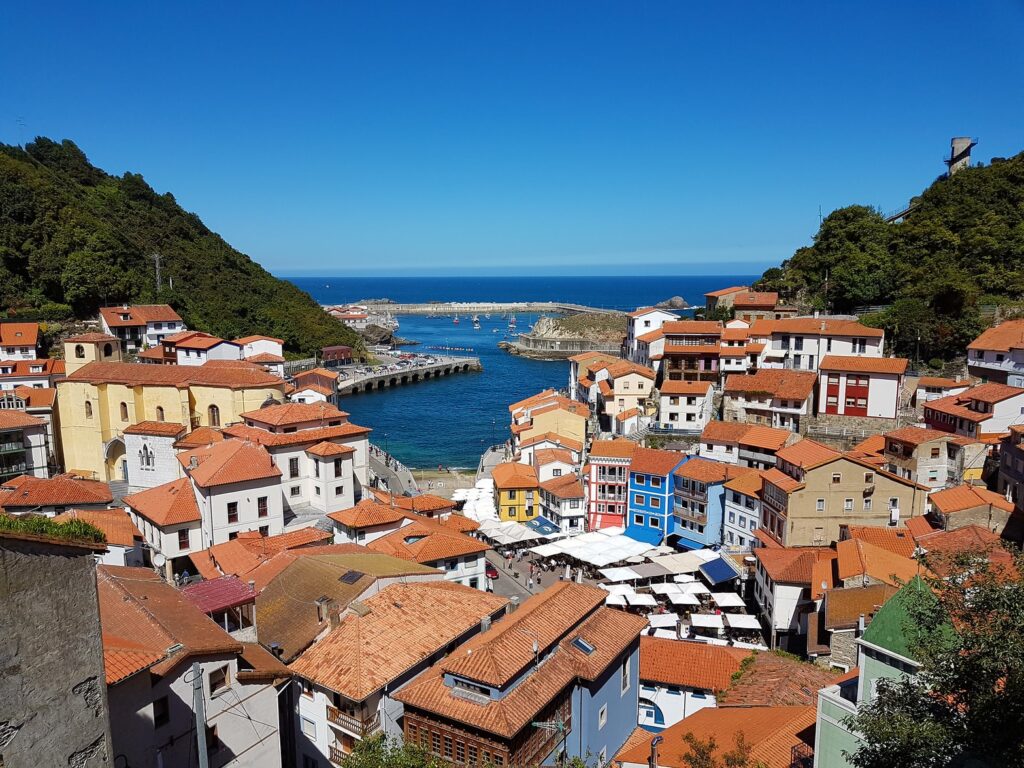
How to make the decision where to live?
So now, we just had to do our research and make a decision, right? Not so simple as that, especially with the third largest country in Europe, covering over 500,000 km (nearly 200,000 miles) and thousands of state, private and concertado (hybrid state/private). So first we drew on our own experiences and did some basic research according to our preferences which concluded the following criteria (doing this really requires being very honest with yourself and drawing on previous and potential experiences):
- Living somewhere with a relatively warm, sunny climate year round (we had been used to living in Costa Rica and Australia!)
- Proximity to a city and airport for a combination of culture, experiences and business/personal travel and potential employment opportunities
- At least 2 or 3 schools that we would be happy for our children to attend whether they be state, private or concertado. (It is also worth knowing that we had a preference for a slightly more progressive, rather than traditional school, that also offered the International Baccalaureate (IB) -preferring our kids to benefit from a wider curriculum for as long as possible, unlike our experiences with A’ Levels in the UK).
We knew that being able to visit and decide on a state school would be a challenge (just as it would be in the UK if not an official open day), plus you are allotted a school, you have no choice, which made it difficult for us to know what to expect and plan. In addition you also have to be in the area in March/April to apply and we knew that would not be possible for us in 2019 when we planned to move here. So a concertado or private school always was the most likely option for us, despite our kids speaking Spanish and knowing that it would most help their Spanish in the future.
Our other criteria were:
- Ability to rent and buy a house with proximity to the coast and preferably with good views too
- Ability to envision our life there to be able to integrate with the local community and feel like we belong.
Then we started looking at the different parts of Spain.
Barcelona

We had already visited Barcelona a few times and my husband lived there as a very young boy and we both love the city. It was initially our first choice as a buzzing city with a lot going for it, including possible other employment opportunities. However, once we thought about it more closely, in particular the political situation with the Catalan region seeking independence from Spain, we felt that it was quite unstable and made us feel uncomfortable being part of this part of the country. Secondly the predominance of the Catalan language, rather than Spanish would lead us to never feeling that we were really part of this beautiful city. Finally it is obviously one of the more expensive areas to live in Spain which could make it difficult for us to purchase our ‘dream home’.
So we somewhat reluctantly crossed Barcelona off the list.
Madrid
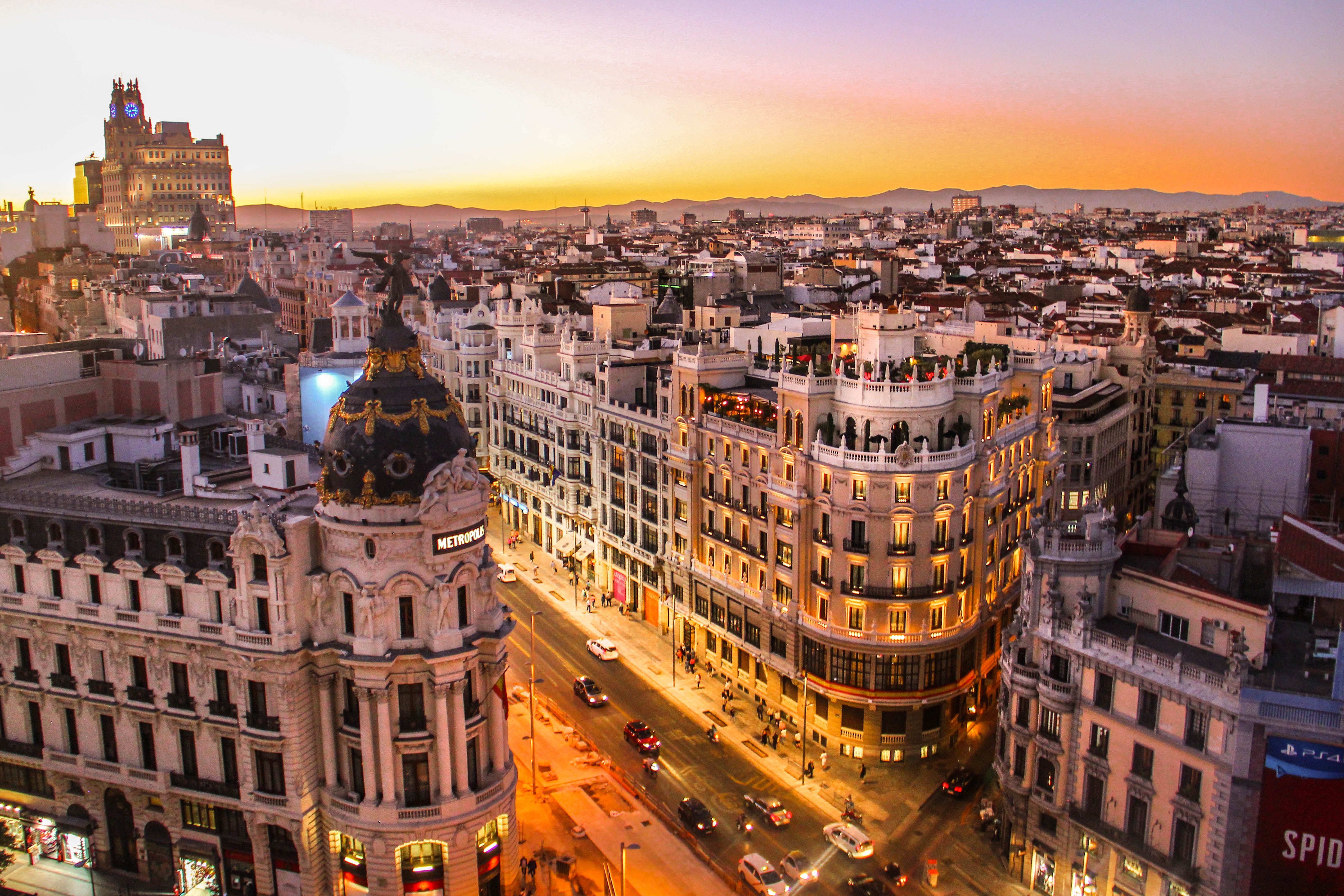
We had both visited Spain’s capital briefly and enjoyed it and know of friends that have lived there who loved it. It certainly has a lot of history and culture going for it, great international connections and a multitude of school and potential employment options. However, Madrid being further to the north and the middle of the country, we feared that the blistering hot summers and cold winters would not lend itself as much to an outdoors’ life, plus it is nowhere near the coast. In addition house prices are high so our overall quality of life would be reduced when combining this with the weather. So, Madrid got crossed off early on too.
Northern Spain

We have never visited the north of Spain: Bilbao, San Sebastian, Santander, Santiago de Compostela all of which look and sound amazing. I have seen so many photos of the beautiful coastline and definitely wanted to visit and explore it further. However, we also knew that the weather would be comparable to southern England (not our ideal unfortunately), that there are fewer cities to choose from to sustain our desire to explore and be connected internationally plus also fewer school options. Again, we ruled out this part of Spain, but put it firmly on our list to visit one summer soon.
How to plan an exploratory trip
So having decided to cross off the north of Spain and Barcelona/Catalonia we then had the area between Valencia down to the Costa del Sol to consider – mainly focusing on the coast. Still a considerable chunk! So we started looking at schools and compiled an excel list of them with the basic information. We then contacted a variety to get more of an idea on place availability, prices (where private), curriculum/philosophy, if we could visit etc to create a shortlist.
We also did some basic research on places that we liked the look of, where we could stay short and long term and costs. We devised an itinerary around these criteria, allowing time to look at a few schools (state, private and concertado), be tourists in the city/town itself and enjoy it (particularly the restaurants!) plus to have time to research house prices and answer any other queries. We had about 2 weeks to do all this for several locations. Then in October 2019 we embarked on our whirlwind tour.
Valencia

We flew into Valencia and immediately loved the city and its’ vibrancy, history and amazingly futuristic Science park, plus other facilities including a fantastic and gigantic ‘Gullivers’ Travels’ type playground for kids. It certainly hit the mark in terms of being an impressive place to live, is also on the coast and has several of school and employment options. We visited a few and particularly liked one of them. So far, it felt like Valencia was going to be it! Job done.
Then we started to research areas to live and whilst there were some lovely homes, none of these were very close to the coast or had the views that we desired. We would have to live some way inland in one of the suburbs, which felt like quite a big compromise as part of our dream was to move to Spain and enjoy the coastline. If we moved to one of the suburbs we feared that we would not really feel like we lived in Valencia, capitalising on the beautiful city or the beaches. In addition, the Valencia region also has the official language of Valenciano, as well as Spanish which is used officially and is required to be taught in schools. A bit like the issue with Catalan in Barcelona/Catalonia, we saw that it would be yet another language for us to master otherwise we might find it harder to integrate with the local community. That said, we still very much had Valencia City as a leading contender from the start.
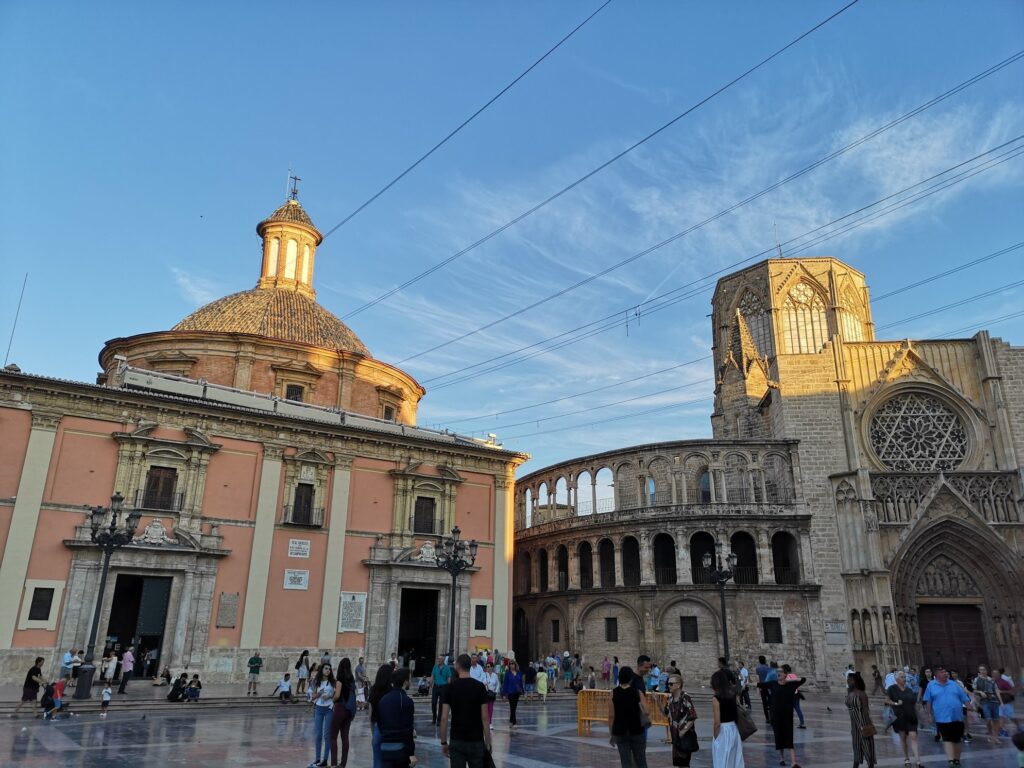
Valencia Region
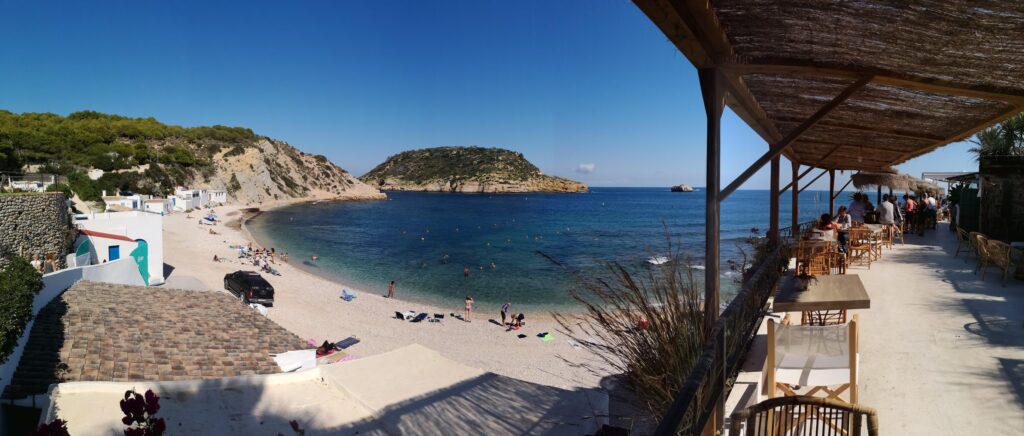
So, we carried on our quest, still thinking that Valencia city was a firm favourite, but with some niggles about where we might live and the language. We travelled down the Valencian coast to where my sister-in-law lives, Oliva a couple of hours south of Valencia, a small, very Spanish town with a lovely historic centre and huge beach that we have visited many times. We love visiting there, but felt that it was not a big enough place for us to live long term as we like being closer to a city. However, we did visit some different schools further towards Alicante that we liked, but we were not wowed by the location, as they felt quite rural and isolated for us to be able to settle for the next 10+ years. We didn’t want to feel bored by the options around us in years to come.
Alicante

We also spent a few days in Alicante, a lovely, relatively small city on the coast with great transport connections. It is a compact and interesting city and has lovely beaches nearby and coastline to explore. We were able to visit a couple of schools in the area, but again didn’t feel like they were the school for us and our kids were similarly not excited by them. Whilst we could find more affordable housing in this area close to the coast with views, it felt like the combination of limited school options, the city’s size, limited work opportunities and the Valenciano language made it a less likely possibility. We took it off our list.
Murcia

We drove a bit inland to this old city which is certainly less touristy than the coast which was about an hour away, plus it has a wonderful but small historic centre. There was an IB state school in the area, but it proved virtually impossible to get in touch with them and visit so we were unable to do so and there were no other international schools in the city for us to visit. We enjoyed the city, but couldn’t imagine ourselves living there, again it felt quite small, potentially challenging to integrate and a bit too far from the coast for us.
Granada
We drove through Granada which is an amazing place to visit, but the school and work options were limited, plus it is very much somewhere that tourists visit year round which we felt might be challenging to live in. But we definitely plan to go back to visit!
Costa del Sol

I very much resisted the idea of even visiting the Costa Del Sol in our mission to find somewhere to live in Spain. For me it conjured up package holidays, drunken tourists, usually British, (of which I had been one in the past on my hen do), high rise buildings and little to no Spanish culture. I also had the idea that Malaga city was an airport and had little else to offer. But, two friends of ours persuaded us to at least consider it, they said they would love to live there if they could and it had a lot to offer. So we drove down the coast to the southern shores to explore the area which is quite large ranging from and including Nerja in the East, Malaga City and then Estepona to the West.
Our first impressions were not great as the weather was terrible for pretty much the whole time we visited – torrential rain, making it challenging to explore and even drive at times. We (mainly I) liked the East of Malaga as it felt more Spanish and also a couple of schools that side too, plus house prices were certainly better value than further west. We also were very pleasantly surprised by Malaga, the old town, museums, the markets, the train service that ran to the west and there is also a technological park which appears to be growing.

We continued spending a few days along the west coast visiting schools in Estepona, San Pedro de Alcantara, Benalmadena, Cartama and Malaga itself. There were certainly lots of options from concertados and private schools (state schools proving far more difficult to visit, plus we now knew that it would be potluck which school we got). We also got to see a number of the sport centres, ‘Polideportivos’, parks, beaches (in the rain!), shopping centres, etc and we started to envisage a life here. It was particularly helped by meeting up with someone I had ‘met’ via Facebook that had moved to the area from Costa Rica under a year before and had similar experiences, a desire to settle longer term and perspectives to us. Nevertheless, I was still resistant to the West of Malaga as I wanted to be more Spanish and less British. However, I could also see that it would be easier to integrate in the West, the train was a bonus, plus the number of school options too, and house prices weren’t quite as astronomical as we feared (unless you aimed for Marbella or nearby!)
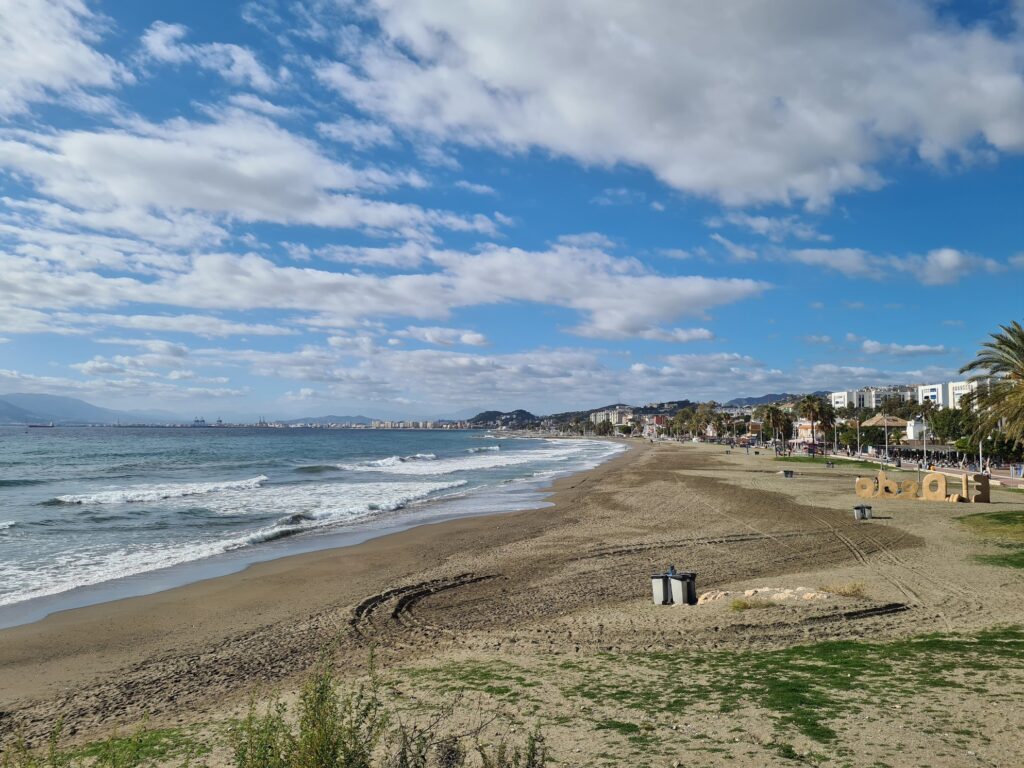
In addition, Malaga airport is also very well connected internationally and there are lots of towns, villages and natural sights to visit on this stretch of coast.
We left the rain of the Costa del Sol to return to Valencia, to think and decompress with my sister in law. I still wanted to make Valencia or maybe East Malaga to work if I am honest, as I was being quite snobbish about the west of Malaga. However, after some time thinking on it more, researching and speaking to others that had moved to the area having lived abroad before settling in the area, I started to come to terms with the fact that the Costa del Sol might be the right option for us and to have a more open mind.

Why did we choose the Costa del Sol?
We had a very specific set of criteria when trying to find the best place for us to live in Spain, a dream wish list, that we didn’t know was really possible. Whilst we were obviously willing to compromise, we wanted to give our dream a shot first.
Whilst the Costa del Sol does have a lot of tourists in the summer in particular, we felt we could find somewhere to live that was not in the thick of it and still be able to explore and be part of Spanish life. There are lots of international schools to choose from, towns to live in and visit, and the presence of a more international community makes it easier to make friends whilst not only limiting ourselves to that. The large number of towns to live in also means there are a variety of properties to be able to buy which we found more affordable than Valencia city, for example. There are no additional languages to worry about apart from Spanish (check out my post about Spanish resources and lessons for free), plus the weather is generally good (although not as I am typing this nor when we first came to visit!) It felt like it could be the perfect balance for our needs.
We returned several months later for a few weeks to look at nearly every school (!) and stay in a variety of towns to make our final decision and now live in Benalmadena Pueblo which is 30 minutes from Malaga by train and has a multitude of schools, activities and beaches closeby.
Are we happy living on the Costa del Sol?
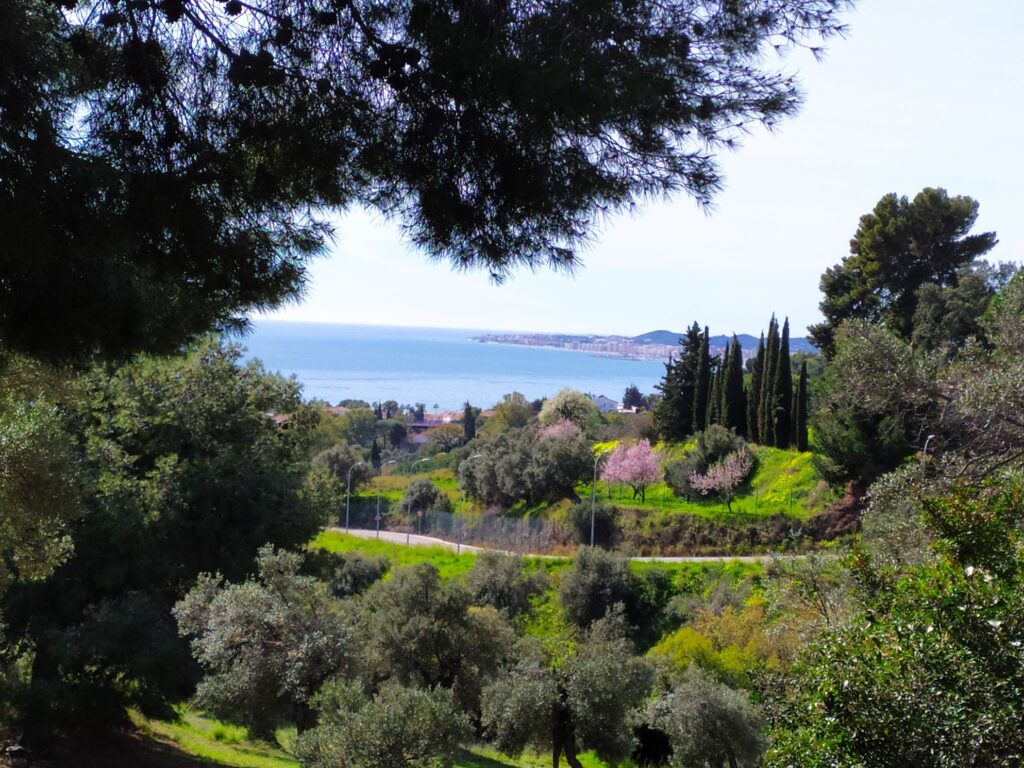
So now 18 months on from moving here, I still think we made the right decision to move to this part of Spain. We are really enjoying the outdoors lifestyle and being close to the sea, even if life is somewhat restricted right now due to things out of our control. We genuinely can’t think of anywhere else we would rather have been during this time. The kids have settled well in their international school (which is quite progressive and offers the IB) and we have friends in and outside of the school and international community. It has been more challenging to make and develop friendships since March 2020, but I am sure that this is due to the current situation and that also things will change in time. We have not really experienced a full ‘normal’ year of living here yet as last summer there were so few tourists, apart from Spanish ones. We may feel differently in the future about our choice in the summer months, but we could also use that time to visit family and friends and visit other parts of Europe. All in all, we made the right choice!
So where do you live in Spain, or would you like to live? What were/are your criteria for choosing a long term home whether it is Spain or elsewhere? We would love to hear what ideas, questions or suggestions you have for making big decisions like where to live too…..
If you are considering or already do live abroad as an expat, why not check out some ideas on how to continue to develop connections with those near and far, especially during big occasions like Christmas and Birthdays – check out this post.
Photos: Mainly our own, Madrid: Florian Wehde, Asturias: Miguel Ángel Sanz, Bilbao: elCarito
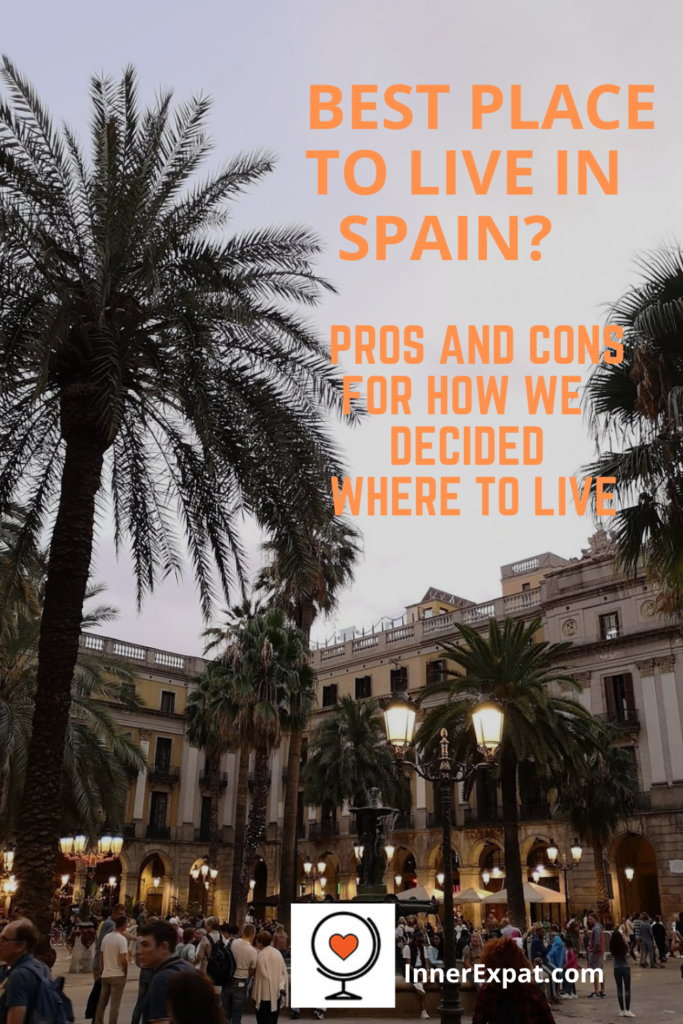




What a good read. I’m in a similar position contemplating moving to Spain after 10 years in East Africa. I am a teacher and been applying to various international schools but finding the right school for my 3 children and a community to belong to is also important. I’m also like you in wanting to avoid a stag/hen party hotspot so it was helpful to read what you wrote. Also, from experience places with a lot of tourism seem more open to strangers and have a welcoming feel to them. I’d love to be able to ask for your insights and a few schools I’ve applied to if I can email you?
Hi Rachael,
Thanks for your message and feedback, appreciate it!
Exciting that you are considering a move to Spain and certainly think there are plenty of options for both you and the kids in this part of the world and the ability to be part of different communities. It was certainly a consideration for us to move to this part of Spain to come to someone that welcomes and is used to many nationalities. Please feel free to email me too and good luck in your search 🙂
Very helpful article. We are planning to move to Spain in 2022 with a focus on the Med side in Costa Del Sol or greater Valencia. Our kids are gone so schools not an issue for us.
Thanks, Sean. Good luck with the research and planning, it is certainly a bit easier, not having to consider children in the mix. Hope you find a happy home here.
Hi, we are looking for next year. We have an 8 year old girl and 9 year old boy. Would love to know which school you chose and your top best schools to see in the area? Thank you for your insight!
Mary 🙂
Hi Mary,
Thanks for your message. How exciting that you are moving here too!
Choosing schools is such a personal decision, so I recommend that you visit as many schools as possible – we visited a variety of international and Spanish schools and concertados (part state/private schools) to get a good feel. It also depends a lot on level of Spanish your children have and your long term plans. We moved here from Costa Rica 3 years ago and our children were virtually fluent in Spanish (well, Costa Rican Spanish!) and we chose an International Private School – Colegio Internacional Torrequebrada as it does the IB program and the level of Spanish increases as they get older so it is virtually all in Spanish by the end. We felt that this was a great combination for them and allowed them to study here long term if they chose. However, it became clear to us in just the last year that they probably didn’t want to study here in the long term and that the level of Spanish was becoming a barrier to their enjoyment of school. So they have literally just changed to a British School here instead (feel free to pm me via Inner Expat’s Facebook page for any specific questions around this).
So far, they seem very happy with the change, so I think we made the right call – for them. Maybe in hindsight we could have made a different decision initially for them to have gone to state school for primary to really consolidate their Spanish, but this was not an option for us at the time as we were overseas and didn’t have an address during the enrolment process. However, I think the younger a child starts learning Spanish the easier it will be for them in the long run – depending very much on the teacher and school environment. Some state schools have great reputations here, others not so much and you don’t generally get to choose as they are based largely on catchment areas.
There is also a Facebook group – Schools and Education on the Costa Del Sol that is worth checking out about other people’s experiences on the Costa del Sol.
Hope that is of some use and best of luck with your research and finding the best school for your children!
With the Costa del sol you can\’t go wrong. You defo made the right choice!
Yes, agreed. Just took me a while to get over my prejudices about it!